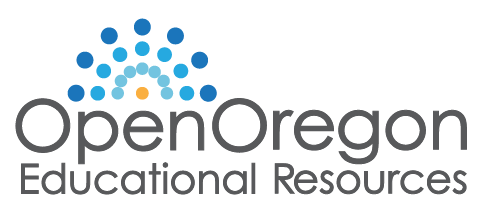This post was contributed by Tim Rogers, Associate Vice President/CIO, College Support Services Division; Natalie Beach, Dean, Library & Learning Resources; Friday Valentine, Digital Assets Curator, and Steve Richardson, Managing Editor, Chemeketa Press.
Chemeketa Community College views high textbook costs as a critical problem preventing students from having full access to core course materials. We have taken a multi-pronged approach to textbook affordability in service of student success. Our current projects reflect years of planning, creating infrastructure, and collaborating between key departments in order to provide high-quality, relevant materials at low or no cost to students.
We are excited to announce the creation of Chemeketa Press. The Press will develop self-supporting systems to help Chemeketa faculty publish affordable textbooks for their courses — and perhaps benefit faculty and students more widely in the future as well. The Press pursues four general goals:
- Publish affordable and effective college textbooks
- Support faculty in developing alternatives to commercial textbooks
- Involve students in the publishing process
- Set an example that other colleges can follow
Three Chemeketa Press pilot projects are currently under development. In one project, full- and part-time Art faculty are creating an open textbook, Art for Everyone, for use in Chemeketa’s art appreciation course. The current commercial textbook for this course costs about $200. Some of the material for the book comes from open educational resources available through Saylor and elsewhere, but much of the work is authored by the faculty team. The accompanying images are either openly licensed works from major museums or privately licensed works by local artists who have volunteered the use of their images for this book.
The beta version of Art for Everyone will be released this fall, and feedback from students and faculty will help the team improve the book and develop instructional support materials for 2016-17. When Chemeketa Press releases this text in its final version, students will have the option of a free electronic version under a Creative Commons license or an optional, full-color printed version that will cost less than $50.
Other pilot teams are using openly licensed, privately licensed, public domain, and original materials to develop affordable, alternative texts for classes in elementary algebra, applied algebra and geometry, fundamentals of writing, introduction to composition, and academic thinking and reading. Plans are in the works to launch a second round of pilot projects in Fall 2015.
At the same time, the library is taking the lead in developing Chemeketa Learning Cloud, a digital repository of instructional content created by faculty (documents, video, audio, images). This represents the first major project of Chemeketa’s Digital Assets Program. The Chemeketa Learning Cloud is strategically placed to facilitate the gathering and use of instructional content for faculty, including Open Educational Resources, by providing a central location for creation and collaboration.
The Chemeketa Learning Cloud is in its third year. In year one we hired the Digital Assets Curator (an 11-month Faculty position), who completed a faculty needs analysis and began researching digital assets management software. The Kaltura media platform was chosen to support video and audio formats and went live in May 2014. We are currently in the process of choosing a Document and Image repository solution. Future work will include a metasearch/discovery layer to bring the two systems together, while continuing to pursue the digital assets work of managing storage costs, preservation, and archiving.
Chemeketa has seen tremendous excitement campuswide about the new press and for OER adoption more generally. Faculty have taken advantage of grant opportunities offered by the college. Training grants cover summer institutes for faculty who want to remix and revise existing materials, while exploration grants support individual faculty members and programs to survey what is already available in order to encourage the reuse and remixing of existing materials. These efforts tie in with work already underway through our innovation grant program.
The decision to put significant resources into textbook cost reduction was a strategic one, made after consultation with other colleges and universities that are exploring publishing. In particular, we learned the value of including students in the process. Chemeketa utilizes student work on book covers and layouts as teaching projects. The Maricopa Millions project in Arizona was helpful for understanding actual costs and potential outcomes of a textbook affordability initiative.
Our project is planned for 3 years, with hopes that the Chemeketa Press will become self-sustaining. This is the pilot year, which will show what the real costs are. In the second year we expect to learn more about possible revenue to offset the costs. So far we have committed funding for faculty grants and textbook production, in addition to one year’s release time for a full-time faculty member to support faculty in the publication of alternative texts. Eventually we would like to focus on the top-selling 46 textbooks (this number may sound like a strange goal, but book #47 is a long way behind book #46 in sales).
We believe that the costs of the program will be mitigated in two ways. First, we plan for an eventual model of generating revenue through a nominal charge for print book sales. Second, we are considering the multiplier effect on dollars spent. OER projects are an expense to the college that we didn’t have before, but they provide proportionally enormous student relief for the investment made. From that standpoint, the money is better spent on textbook cost reduction because it provides a higher rate of return for students than many other cost reduction initiatives.
